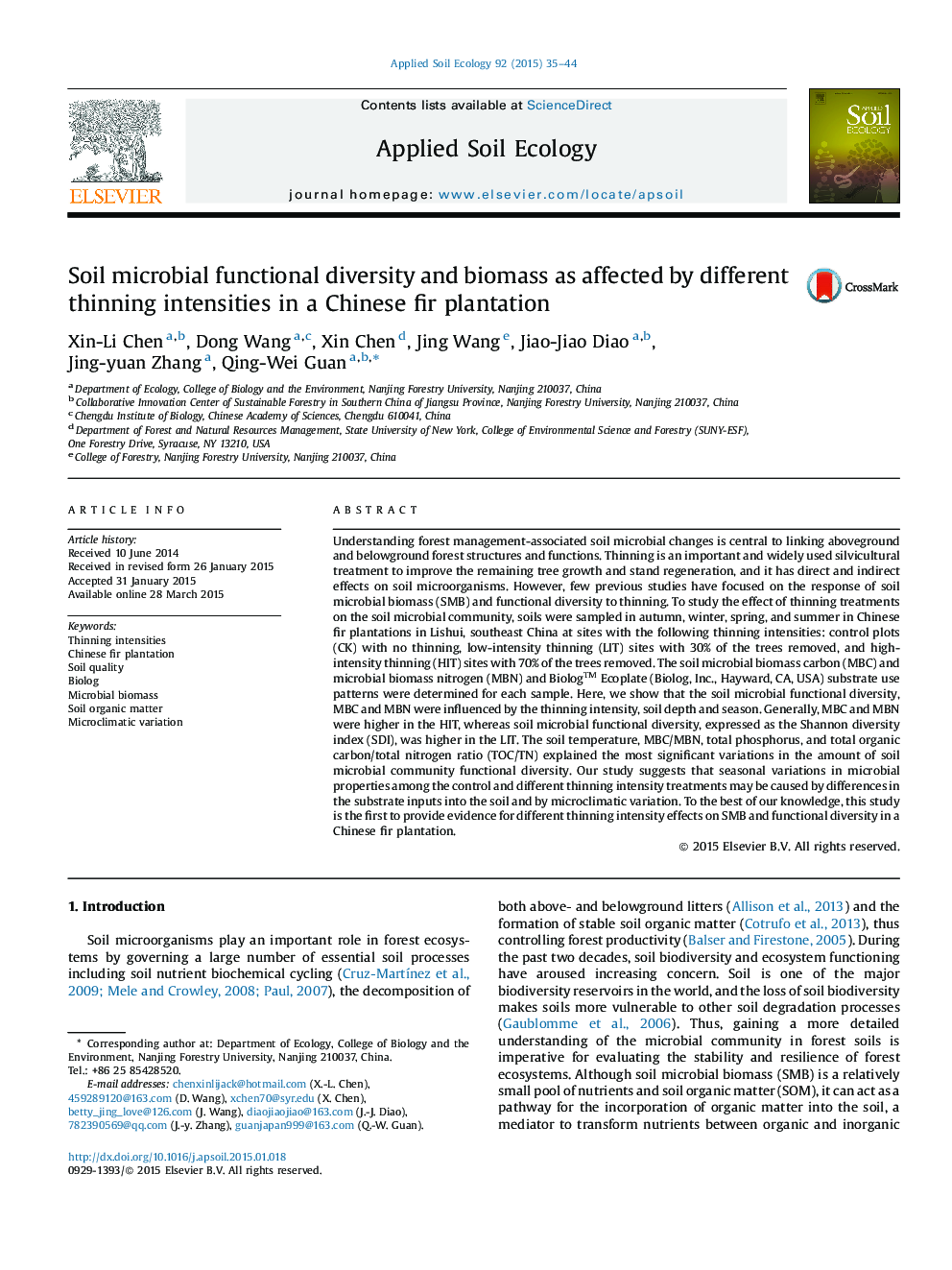| Article ID | Journal | Published Year | Pages | File Type |
|---|---|---|---|---|
| 4381991 | Applied Soil Ecology | 2015 | 10 Pages |
•Soil microbial biomass and functional diversity were significantly affected by thinning intensity, soil depth and season.•Soil microbial biomass carbon and nitrogen were increased under high-intensity thinning practice.•Soil microbial functional diversity was higher in the LIT treatment.•The soil temperature, MBC/MBN, TP, and TOC/TN explain most significant amount of soil microbial community variation.
Understanding forest management-associated soil microbial changes is central to linking aboveground and belowground forest structures and functions. Thinning is an important and widely used silvicultural treatment to improve the remaining tree growth and stand regeneration, and it has direct and indirect effects on soil microorganisms. However, few previous studies have focused on the response of soil microbial biomass (SMB) and functional diversity to thinning. To study the effect of thinning treatments on the soil microbial community, soils were sampled in autumn, winter, spring, and summer in Chinese fir plantations in Lishui, southeast China at sites with the following thinning intensities: control plots (CK) with no thinning, low-intensity thinning (LIT) sites with 30% of the trees removed, and high-intensity thinning (HIT) sites with 70% of the trees removed. The soil microbial biomass carbon (MBC) and microbial biomass nitrogen (MBN) and Biolog™ Ecoplate (Biolog, Inc., Hayward, CA, USA) substrate use patterns were determined for each sample. Here, we show that the soil microbial functional diversity, MBC and MBN were influenced by the thinning intensity, soil depth and season. Generally, MBC and MBN were higher in the HIT, whereas soil microbial functional diversity, expressed as the Shannon diversity index (SDI), was higher in the LIT. The soil temperature, MBC/MBN, total phosphorus, and total organic carbon/total nitrogen ratio (TOC/TN) explained the most significant variations in the amount of soil microbial community functional diversity. Our study suggests that seasonal variations in microbial properties among the control and different thinning intensity treatments may be caused by differences in the substrate inputs into the soil and by microclimatic variation. To the best of our knowledge, this study is the first to provide evidence for different thinning intensity effects on SMB and functional diversity in a Chinese fir plantation.
